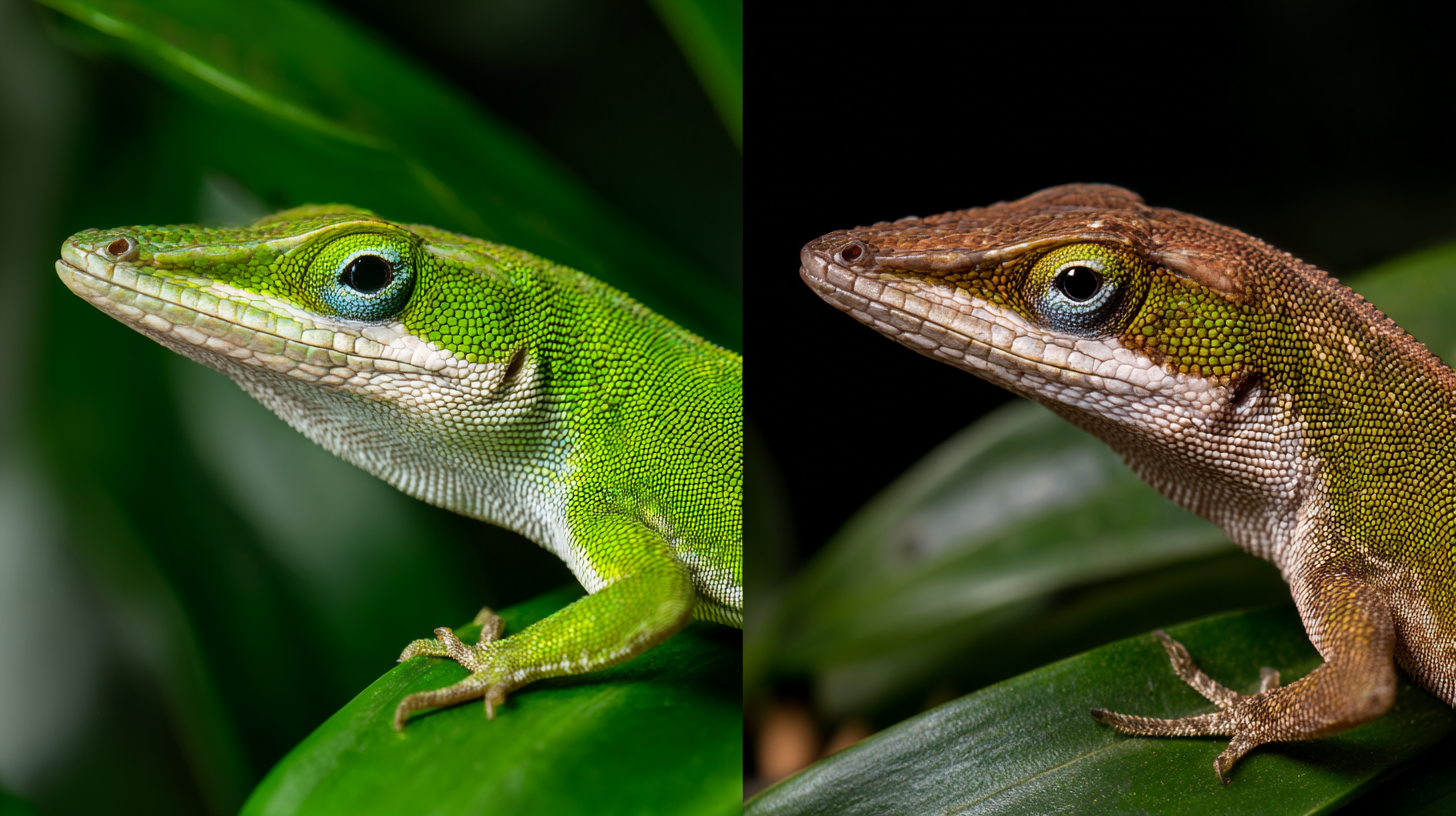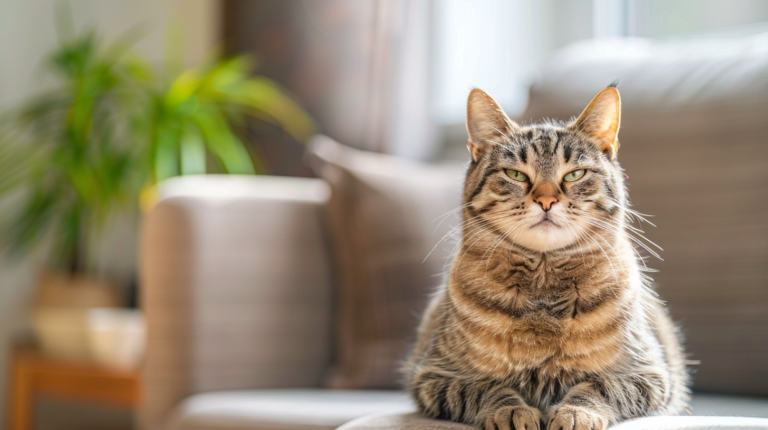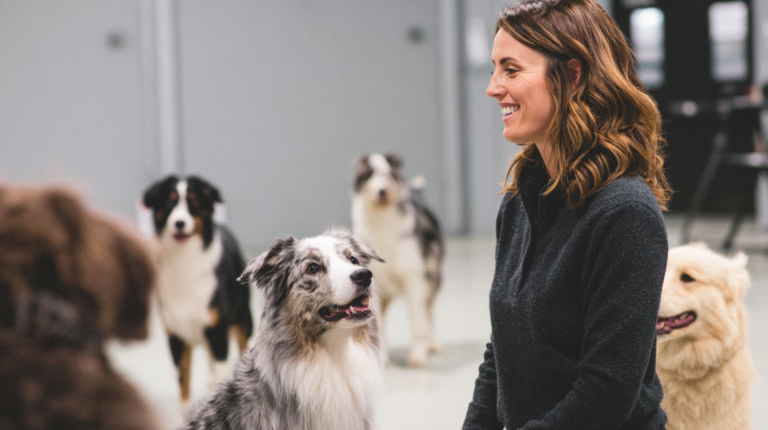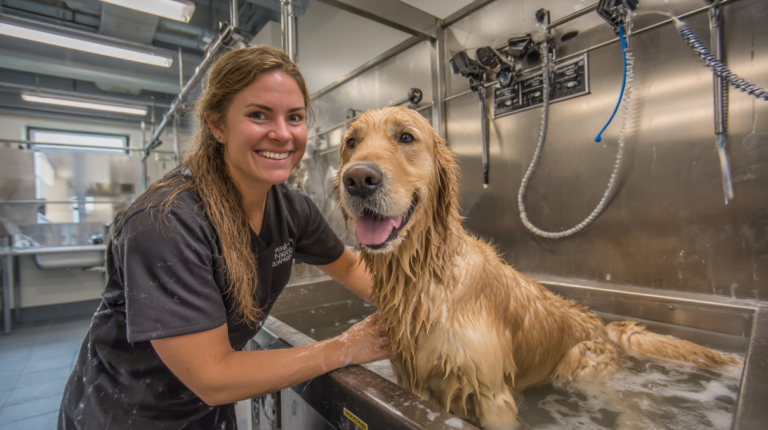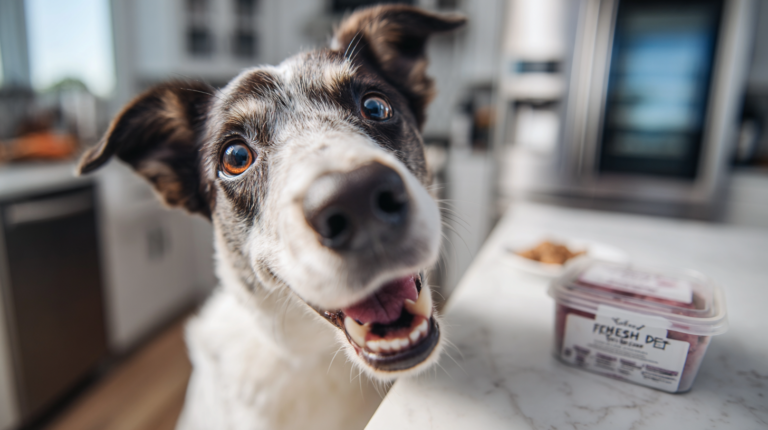Discover why your green anole is turning brown with our expert guide. Learn 5 critical reasons, warning signs, and when to seek veterinary care for your pet lizard.
Table of Contents
Did you know that over 65% of green anole owners report color changes as their primary concern when caring for these fascinating reptiles? If you’ve noticed your vibrant green anole turning brown, you’re not alone in feeling worried about this dramatic transformation. While some color changes are perfectly natural, others can signal serious health issues that require immediate attention.
Green anole turning brown is one of the most common behavioral and physiological responses these remarkable lizards exhibit, but understanding the underlying causes can mean the difference between a healthy pet and a medical emergency. These small, charismatic reptiles have captivated pet owners across the United States and Europe with their ability to change colors, but when that beautiful emerald green shifts to a concerning brown, it’s time to investigate.
As a reptile enthusiast who has cared for green anoles for over a decade, I remember the first time I witnessed my anole, Charlie, turn from his usual bright green to a deep chocolate brown within minutes. Living in coastal North Carolina, I initially thought it was just the humidity affecting him, but I quickly learned that color changes in anoles are far more complex than simple environmental responses.
In this comprehensive guide, we’ll explore the five most alarming reasons behind green anole color changes, provide expert insights on when to worry, and offer actionable solutions to ensure your scaly companion remains healthy and vibrant. Whether you’re a new anole owner or an experienced reptile keeper, this article will equip you with the knowledge needed to properly care for your pet and recognize potential health concerns before they become serious problems.
Understanding Green Anole Color-Changing Mechanisms

Green anoles (Anolis carolinensis) are remarkable creatures equipped with specialized cells called chromatophores that allow them to alter their skin pigmentation. When a green anole is turning brown, these cells are responding to various internal and external stimuli that trigger specific biological processes.
The color-changing ability serves multiple purposes in wild anoles, including thermoregulation, communication, camouflage, and stress responses. In captivity, these same mechanisms continue to function, making color changes an excellent indicator of your pet’s overall health and well-being.
Understanding the normal color range is crucial for identifying problematic changes. Healthy green anoles typically display colors ranging from bright emerald green to various shades of brown, with some individuals showing patterns or spots. The speed and context of these changes often provide the most important clues about underlying issues.
| Color Change Speed | Possible Causes | Concern Level | Action Required |
|---|---|---|---|
| Immediate (seconds) | Temperature shock, sudden stress | High | Check environment immediately |
| Quick (minutes) | Territorial behavior, excitement | Low-Medium | Monitor closely |
| Gradual (hours) | Illness, poor husbandry | High | Veterinary consultation |
| Slow (days) | Seasonal changes, aging | Low | Continue observation |
| Permanent | Chronic stress, serious illness | Very High | Emergency vet visit |
Reason #1: Temperature Regulation and Thermal Stress
One of the most common reasons for green anole turning brown relates to temperature regulation. These ectothermic reptiles rely entirely on their environment to maintain proper body temperature, and color changes often indicate thermal stress or thermoregulatory behavior.
When temperatures drop below their preferred range of 75-85°F (24-29°C), anoles frequently turn darker colors to absorb more heat from available light sources. This adaptive response helps them maximize thermal energy absorption, but prolonged exposure to inappropriate temperatures can lead to serious health complications.
Conversely, when temperatures exceed 90°F (32°C), some anoles may also darken as a stress response, though this is less common than the heat-seeking brown coloration. The key is understanding your specific anole’s normal behavioral patterns and monitoring environmental conditions consistently.
Critical Temperature Warning Signs:
- Rapid color change when lights turn on/off
- Persistent brown coloration during normally green periods
- Lethargy combined with color changes
- Seeking heat sources constantly
- Difficulty moving or apparent stiffness
Expert Solutions for Temperature Issues:
- Install reliable thermometers with both ambient and basking spot readings
- Provide temperature gradients from 75-85°F with basking spots reaching 88-90°F
- Use ceramic heat emitters for nighttime warming if necessary
- Ensure proper ventilation to prevent overheating
- Monitor seasonal temperature fluctuations that might affect your pet
For more expert pet care tips and product recommendations, visit BlithePet.com — your trusted source for pet wellness.
Reason #2: Stress-Related Color Changes and Environmental Factors
Stress represents one of the most serious causes of green anole turning brown, as chronic stress can severely compromise immune function and overall health. Unlike temporary thermoregulatory color changes, stress-induced brown coloration often persists for extended periods and may be accompanied by behavioral changes.
Environmental stressors that commonly affect captive anoles include inadequate habitat size, improper lighting, excessive handling, loud noises, and the presence of perceived threats. Even well-meaning pet owners can inadvertently create stressful conditions that manifest as persistent brown coloration.
The relationship between stress and color change in anoles is mediated by hormonal responses, particularly involving cortisol and other stress hormones. When these chemicals remain elevated for extended periods, they can cause lasting health problems beyond simple color changes.
Major Stress Indicators in Green Anoles:
- Remaining brown for multiple days
- Hiding constantly or avoiding favorite basking spots
- Decreased appetite or complete food refusal
- Aggressive behavior or excessive skittishness
- Abnormal sleeping patterns or location preferences
Stress Reduction Strategies:
- Provide adequate hiding spots and visual barriers
- Maintain consistent daily routines for lighting and feeding
- Minimize handling, especially during acclimation periods
- Ensure proper habitat size (minimum 20 gallons for one adult)
- Create naturalistic environments with live or artificial plants
Research conducted by the American Association of Zoo Veterinarians indicates that environmental enrichment can reduce stress-related color changes by up to 70% in captive reptiles, highlighting the importance of proper habitat design.
Reason #3: Illness and Disease-Related Color Changes
When a green anole is turning brown due to illness, the color change often represents the body’s response to infection, parasites, or other health complications. Unlike stress or temperature-related changes, disease-related brown coloration typically appears alongside other clinical symptoms that require immediate veterinary attention.
Respiratory infections, commonly caused by bacterial or viral pathogens, frequently cause anoles to display persistent brown coloration as their immune system fights the illness. These infections can quickly become life-threatening if left untreated, making early recognition crucial for successful treatment outcomes.
Parasitic infections, particularly those affecting the digestive system, can also trigger color changes as the anole’s body struggles to maintain normal physiological processes. Internal parasites can cause malnutrition and dehydration, both of which may manifest as abnormal coloration patterns.
Disease-Related Symptoms to Monitor:
- Brown color combined with open-mouth breathing
- Discharge from nose or mouth
- Swollen or asymmetrical body parts
- Changes in defecation patterns or consistency
- Visible parasites or unusual skin conditions
- Weight loss despite normal appetite
- Lethargy unrelated to temperature or lighting changes
When to Seek Emergency Veterinary Care:
- Any combination of brown color and breathing difficulties
- Complete loss of appetite lasting more than 48 hours
- Visible injuries or wounds
- Seizures or neurological symptoms
- Severe dehydration indicated by skin tenting
A study published in the Journal of Herpetological Medicine and Surgery found that early intervention in reptile health issues improves treatment success rates by over 80%, emphasizing the importance of prompt veterinary consultation when illness is suspected.
| Health Issue | Color Pattern | Additional Symptoms | Urgency Level |
|---|---|---|---|
| Respiratory Infection | Persistent brown, pale | Open mouth, wheezing | Emergency |
| Parasites | Patchy brown/green | Weight loss, poor appetite | High |
| Dehydration | Dull brown | Sunken eyes, skin tenting | High |
| Metabolic Bone Disease | Variable brown | Soft jaw, tremors | Emergency |
| Kidney Disease | Dark brown | Increased urination | High |
Reason #4: Improper Lighting and UVB Deficiency
Inadequate lighting represents a critical factor in green anole health that many pet owners underestimate. When anoles don’t receive proper UVB radiation, their ability to synthesize vitamin D3 becomes compromised, leading to serious health issues that often manifest as persistent brown coloration.
UVB lighting serves multiple purposes beyond vitamin synthesis, including regulating circadian rhythms, promoting natural behaviors, and supporting immune function. Without adequate UVB exposure, anoles may exhibit color changes as their bodies struggle to maintain normal physiological processes.
The relationship between lighting and green anole turning brown is particularly complex because light quality, intensity, and duration all play crucial roles. Many commercial UVB bulbs lose effectiveness over time, even when they continue producing visible light, making regular replacement essential for maintaining proper reptile health.
Lighting-Related Health Problems:
- Metabolic bone disease from calcium deficiency
- Reproductive issues and breeding difficulties
- Compromised immune system function
- Behavioral abnormalities and reduced activity
- Poor appetite and digestive problems
Proper Lighting Guidelines:
- Provide 10-12 hours of UVB lighting daily using reptile-specific bulbs
- Replace UVB bulbs every 6-12 months regardless of visible function
- Position lights 6-12 inches from basking areas for optimal exposure
- Use timers to maintain consistent lighting schedules
- Combine UVB with appropriate heat sources for complete spectrum needs
Research from the Association of Reptilian and Amphibian Veterinarians demonstrates that proper UVB lighting can prevent up to 90% of calcium-related health issues in captive reptiles, making it one of the most important aspects of anole care.
Reason #5: Territorial Behavior and Social Stress
Green anoles are naturally territorial creatures, and housing multiple individuals together can create significant stress that manifests as persistent brown coloration. Male anoles, in particular, are highly territorial and may engage in constant dominance displays that keep subordinate individuals in a stressed, brown state.
Even when anoles appear to coexist peacefully, subtle territorial behaviors may be occurring that cause chronic stress in less dominant individuals. This stress can suppress immune function, reduce appetite, and create long-term health problems that extend far beyond simple color changes.
Understanding anole social dynamics is crucial for preventing territorial stress. In their natural habitat, anoles maintain large territories and rarely encounter other individuals except during breeding season. Captive environments that force constant proximity can create unnatural stress levels.
Signs of Territorial Stress:
- One anole consistently brown while others remain green
- Aggressive posturing including dewlap displays and head bobbing
- Competition for basking spots or food resources
- One individual hiding constantly while others are active
- Size differences between housed anoles
Solutions for Territorial Issues:
- House anoles individually whenever possible
- Provide multiple basking spots and hiding areas if cohabitation is necessary
- Ensure adequate space with minimum 20 gallons per adult anole
- Monitor feeding to ensure all individuals receive adequate nutrition
- Separate immediately if aggression or persistent stress is observed
Have you noticed your anole displaying territorial behaviors? Understanding these natural instincts can help you create a more suitable environment that reduces stress and promotes healthy color displays.
Expert Tips for Maintaining Healthy Green Anole Colors
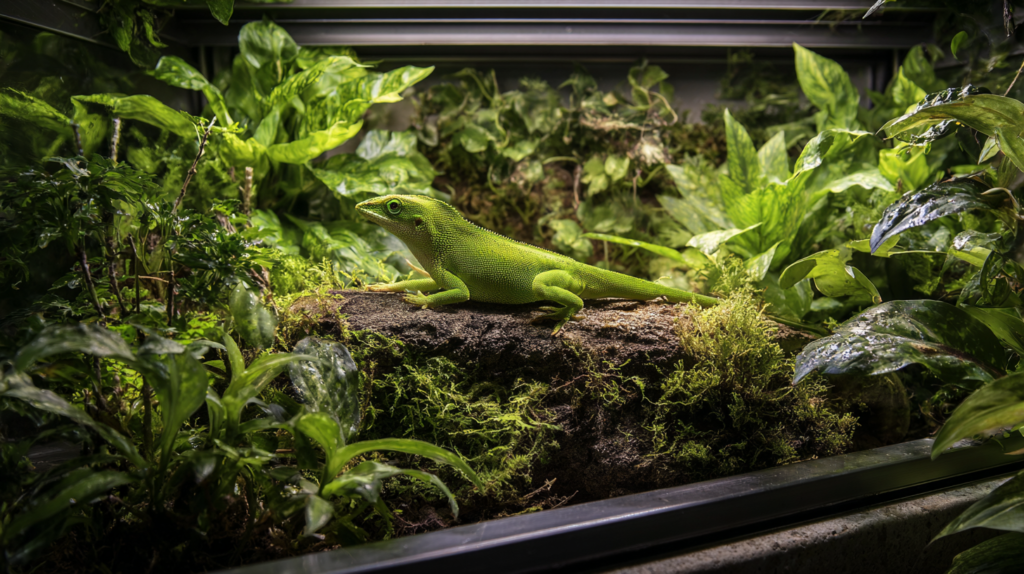
Maintaining proper coloration in green anoles requires attention to multiple environmental and husbandry factors. These expert recommendations, developed through decades of reptile care experience, can help ensure your anole displays healthy color patterns throughout its life.
Essential Husbandry Practices:
- Temperature Gradient Management: Create distinct temperature zones within the habitat, allowing your anole to thermoregulate naturally by moving between areas.
- Humidity Control: Maintain humidity levels between 60-70% using appropriate substrates, water features, and ventilation systems.
- Feeding Schedule Consistency: Establish regular feeding times with appropriately sized prey items to reduce stress and maintain health.
- Habitat Enrichment: Provide climbing opportunities, hiding spots, and visual barriers that mimic natural environments.
- Regular Health Monitoring: Conduct weekly visual health checks, documenting any changes in color, behavior, or appetite.
- Water Quality Management: Provide clean, chlorine-free water for drinking and humidity maintenance.
- Substrate Selection: Choose appropriate substrates that allow for natural behaviors while preventing impaction risks.
- Quarantine Protocols: Isolate new anoles for 30-60 days before introducing them to established habitats.
- Emergency Preparedness: Maintain contact information for reptile-experienced veterinarians and basic first aid supplies.
- Environmental Stability: Minimize sudden changes in lighting, temperature, or habitat arrangement that could trigger stress responses.
Common Mistakes That Cause Green Anole Color Problems
Many well-intentioned anole owners inadvertently create conditions that lead to problematic color changes. Understanding these common mistakes can help you avoid issues that might compromise your pet’s health and natural color displays.
Housing and Environment Mistakes:
- Using glass tanks without proper ventilation, leading to humidity problems
- Placing habitats near windows where temperature fluctuations occur
- Using inappropriate substrate that retains too much or too little moisture
- Overcrowding multiple anoles in inadequate space
- Neglecting to provide adequate climbing opportunities
Lighting and Heating Errors:
- Using incorrect bulb types or insufficient UVB output
- Positioning lights too far from basking areas
- Failing to replace UVB bulbs on appropriate schedules
- Creating hot spots that are too intense or cool areas that are too cold
- Using red or colored lights that disrupt natural circadian rhythms
Feeding and Nutrition Problems:
- Offering inappropriately sized prey items
- Providing inadequate variety in diet composition
- Neglecting proper calcium and vitamin supplementation
- Feeding too frequently or infrequently for optimal health
- Using wild-caught insects that may carry parasites or pesticides
These mistakes often compound over time, creating chronic stress that manifests as persistent brown coloration. Prevention is always easier than treatment when it comes to reptile health issues.
Warning Signs That Require Immediate Veterinary Attention
Recognizing when green anole turning brown indicates a serious health emergency can save your pet’s life. Certain combinations of symptoms require immediate professional intervention, even if they occur outside normal veterinary hours.
Emergency Symptoms:
- Brown coloration combined with labored breathing or open-mouth breathing
- Complete loss of appetite lasting more than 72 hours
- Visible injuries, cuts, or areas of tissue damage
- Seizures, tremors, or other neurological symptoms
- Severe lethargy where the anole cannot support its own body weight
- Signs of dehydration including sunken eyes and skin tenting
- Prolapsed organs or unusual swelling
Urgent but Non-Emergency Symptoms:
- Gradual color change over several days without other symptoms
- Mild changes in appetite or eating habits
- Occasional unusual posturing or behavioral changes
- Minor variations in activity levels
- Seasonal color variations that follow predictable patterns
When in doubt, consulting with a reptile-experienced veterinarian is always the safest approach. Many health issues that initially appear minor can quickly become serious in small reptiles like anoles.
| Symptom Category | Immediate Action | Can Wait for Regular Hours | Notes |
|---|---|---|---|
| Breathing Issues | Emergency vet | Never | Life-threatening |
| Complete Appetite Loss | Emergency after 72h | Up to 48h | Monitor closely |
| Injury/Trauma | Emergency vet | Never | Immediate care needed |
| Neurological Signs | Emergency vet | Never | Can indicate serious illness |
| Color Change Only | Observe | Yes | Monitor for other symptoms |
| Mild Lethargy | Schedule appointment | Within 48h | May indicate early illness |
Step-by-Step Guide for Addressing Green Anole Color Changes
When you notice your green anole turning brown, following a systematic approach can help you identify the cause and implement appropriate solutions. This step-by-step guide provides a methodical framework for addressing color changes effectively.
Step 1: Environmental Assessment (First 30 minutes)
- Check all temperature readings using reliable thermometers
- Verify humidity levels with digital hygrometers
- Examine lighting functionality and positioning
- Assess habitat cleanliness and substrate condition
- Document current environmental parameters
Step 2: Behavioral Observation (Next 2-4 hours)
- Monitor your anole’s activity patterns and preferred locations
- Note any changes in appetite, drinking, or elimination
- Observe for signs of respiratory distress or abnormal posturing
- Check for territorial behaviors if multiple anoles are present
- Record the duration and consistency of color changes
Step 3: Immediate Corrections (First 24 hours)
- Adjust temperature or humidity if readings are outside normal ranges
- Provide additional hiding spots or visual barriers if stress is suspected
- Separate anoles if territorial aggression is observed
- Ensure access to clean water and appropriate food
- Minimize handling and environmental disturbances
Step 4: Monitoring and Documentation (Days 2-7)
- Continue daily observations and record all changes
- Photograph your anole to document color patterns and any physical changes
- Maintain detailed logs of feeding, elimination, and behavior
- Note any improvements or worsening of symptoms
- Contact veterinarian if no improvement is seen within 48 hours
Step 5: Professional Consultation (As needed)
- Schedule veterinary appointment if symptoms persist or worsen
- Prepare detailed history including environmental parameters and behavioral changes
- Bring photographs and written documentation to appointment
- Follow all veterinary recommendations and treatment protocols
- Schedule follow-up appointments as recommended
Myth-Busting: Common Misconceptions About Anole Color Changes
Several persistent myths about green anole color changes can lead to inappropriate care and missed health issues. Understanding the facts behind these misconceptions helps ensure proper response to color-related concerns.
Myth 1: Green anoles only turn brown when they’re cold. Fact: While temperature affects coloration, anoles turn brown for numerous reasons including stress, illness, territorial behavior, and lighting issues. Temperature is just one factor among many.
Myth 2: “Brown coloration always indicates illness.” Fact: Brown is a natural color for green anoles and serves multiple biological functions. The context, duration, and accompanying symptoms determine whether brown coloration is concerning.
Myth 3: “Anoles can consciously control their color changes.” Fact: Color changes are largely involuntary responses controlled by hormones and nervous system signals. Anoles cannot simply decide to change colors at will.
Research published in the Journal of Experimental Biology demonstrates that anole color changes are complex physiological responses involving multiple body systems, not simple conscious decisions.
Seasonal Considerations for Green Anole Care
Understanding how seasonal changes affect green anole behavior and coloration helps pet owners provide appropriate care throughout the year. Even indoor anoles can be influenced by seasonal variations in temperature, humidity, and daylight hours.
Spring Considerations:
- Increased activity and appetite as temperatures warm
- Potential breeding behaviors and territorial displays
- Gradual transition to brighter green coloration
- Enhanced response to UVB lighting as days lengthen
Summer Management:
- Monitor for overheating in warm climates
- Ensure adequate ventilation and cooling options
- Maintain consistent humidity despite external weather changes
- Watch for increased territorial behavior during peak activity periods
Fall Preparation:
- Gradually reduce lighting hours to mimic natural conditions
- Monitor for decreased appetite and activity levels
- Prepare heating systems for cooler weather
- Consider health checkups before winter dormancy periods
Winter Care:
- Maintain stable temperatures despite external cold
- Provide adequate lighting during shorter days
- Monitor for seasonal color changes that may appear more brown
- Adjust feeding schedules to match reduced activity levels
What seasonal changes have you noticed in your anole’s behavior and coloration? Understanding these natural cycles can help you provide better care throughout the year.
Prevention Strategies for Long-Term Anole Health
Preventing color-change issues is always preferable to treating them after they develop. These comprehensive prevention strategies address the most common causes of problematic brown coloration in green anoles.
Environmental Prevention:
- Establish and maintain consistent environmental parameters
- Use backup heating and lighting systems to prevent equipment failures
- Regular equipment maintenance and timely bulb replacements
- Seasonal adjustments to accommodate changing external conditions
- Quality control measures for food, water, and substrate
Health Prevention:
- Annual veterinary checkups with reptile-experienced veterinarians
- Quarantine protocols for new animals or habitat additions
- Regular parasite screening and preventive treatments
- Nutritional supplementation according to veterinary recommendations
- Early intervention protocols for minor health concerns
Stress Prevention:
- Gradual introduction of habitat changes
- Consistent daily routines for feeding and lighting
- Appropriate habitat size and environmental enrichment
- Minimal handling during acclimation and breeding seasons
- Regular monitoring without excessive disturbance
FAQ
Conclusion:
Understanding why your green anole is turning brown empowers you to provide the best possible care for your reptilian companion. From temperature regulation and stress responses to serious health concerns, color changes serve as valuable indicators of your anole’s overall well-being.
The five primary reasons we’ve explored – temperature regulation, stress, illness, lighting deficiencies, and territorial behavior – represent the most common causes of concerning color changes. By addressing these factors proactively and maintaining optimal environmental conditions, you can help ensure your anole displays healthy, vibrant colors throughout its life.
Remember that every anole is unique, and what appears normal for one individual may be concerning for another. Developing familiarity with your specific pet’s normal color patterns, behaviors, and preferences provides the foundation for recognizing when something might be wrong.
When in doubt, consulting with reptile-experienced veterinarians ensures that serious health issues receive appropriate treatment before they become life-threatening. The investment in proper veterinary care, quality equipment, and ongoing education about anole needs pays dividends in the form of a healthy, long-lived pet.
Have a similar experience with your pet? Share it in the comments below! Don’t forget to check out our other helpful guides at BlithePet.com for more expert advice on reptile care and pet wellness.

